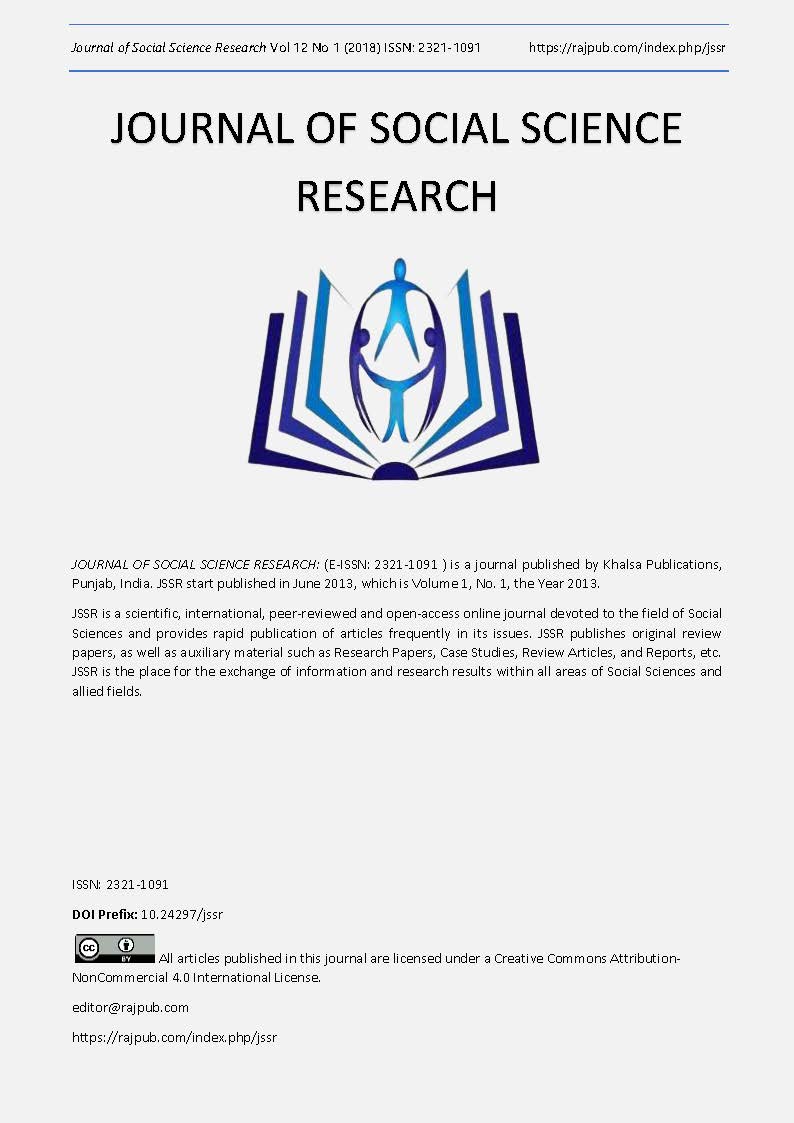The Concept and Model of Strategic Leadership and Its Importance in Increasing School Achievement
DOI:
https://doi.org/10.24297/jssr.v12i1.6995Keywords:
Strategic Leadership, Organizational Capabilities, Individual CharacteristicsAbstract
Strategic leadership is one of the leaderships practiced by school organizations today. Organizational capabilities and individual characteristics are two key components of strategic leadership that are indispensable to ensure that this strategic leadership can be realized effectively in schools. This article discusses the concept of strategic leadership, domain and elements and theories related to strategic leadership. In addition, this study also attempts to highlight Davies and Davies 2004 strategic leadership model which has nine elements under two key components of strategic leadership i.e. organizational capability and individual characteristics. Furthermore, the final part of the study discusses the importance of strategic leadership in the school organization. An overview of previous studies also shows that strategic leadership has significant relationships with school achievement. Hence, through the practice of strategic leadership that is preached in schools, the line of leadership of the school will be more capable in helping to improve the achievement of their respective schools.
Downloads
References
2. Ahmad Masrizal, M., & Mohd Izham, M. H. (2012). JURNAL PENDIDIKAN DAN LATIHAN Jilid 4 Bil . 02 Disember 2012 Penaung ISSN : 1985-9597 SIDANG EDITOR Ketua Editor Editor Jurnal Pendidikan Dan Latihan.
3. Baharom, M., & Mohamad Johdi, S. (2009). Kepimpinan pendidikan dalam pembangunan modal insan. Seminar Pembangunan Modal Insan 2009, (1989), 23–24.
4. Bass, B. M, & Avolio, B. J. (1994). Improving organizational effectiveness through transformational leadership. Sage Publications, Inc.
5. Davies, B. (2004). Developing the strategically focused school. School Leadership & Management, 24(1), 11–27. https://doi.org/10.1080/1363243042000172796.
6. Davies, B., & Davies, B. J. (2005). Strategic Leadership Reconsidered. Leadership and Policy in Schools, 4(3), 241–260. https://doi.org/10.1080/15700760500244819.
7. Davies, B., & Davies, B. J. (2010). The nature and dimensions of strategic leadership. International Studies in Education Administration, 38(1), 5–22. https://doi.org/10.4135/9781473915244.n7.
8. Davies, B. J., & Davies, B. (2004). Strategic leadership. School Leadership, 24(1), 29–38. https://doi.org/10.1080/1363243042000172804.
9. Davies, B. J., & Davies, B. (2006). Developing a Model for Strategic Leadership in Schools. Educational Management Administration & Leadership, 34(1), 121–139. https://doi.org/10.1177/1741143206059542.
10. Eacott, S. (2010). Tenure, functional track and strategic leadership. International Journal of Educational Management, 24, 448–458. https://doi.org/10.1108/09513541011056009.
11. Fiedler, F. E. (1964). A contingency model of leadership, effectiveness. In L. Berkowitz (Ed.). Advances in experimental social psychology, 1. New York: Academic Press.
12. Hairuddin, M. A. (2012). The quest for strategic Malaysian Quality National Primary School Leaders. International Journal of Educational Management, 26 (1), 83 – 98.
13. Hairuddin, M. A., & Aniyath, A. (2015). Do strategic leadership and self efficacy among school leaders make a difference? Asian Social Science, 11(27), 219–234. https://doi.org/10.5539/ass.v11n27p219.
14. Hidayah, N., Sule, E. T., Wirasasmita, Y., & Padmadisastra, S. (2015). How To Develop Strategic Leadership in Higher Education Institution ? International Journal of Economics, Commerce and Management, III(5), 1164–1175.
15. Hitt, M. & Ireland, R. 2002. The essence of strategic leadership: Managing human and social capital. Journal of Leadership & Organizational Studies, 9(1): 3-14.
16. House, R. J. (1996). Path-goal theory of leadership: Lessons, legacy, and are formulated theory. Leadership Quarterly, 7(3), 323 – 352. doi:10.1016/s1048-9843(96)90024-7.
17. Inan, G. G., & Bititci, U. S. (2015). Understanding Organizational Capabilities and Dynamic Capabilities in the Context of Micro Enterprises: A Research Agenda. Procedia - Social and Behavioral Sciences, 210, 310–319. https://doi.org/10.1016/j.sbspro.2015.11.371.
18. Jamilah, A., & Yusof, B. (2011). Amalan kepimpinan Sekolah Berprestasi Tinggi (SBT) di Malaysia. Journal of Edupress, 1(September), 323–335. Retrieved from http://eprints.utm.my/17080/1/JOE-1-2011-039.pdf.
19. Jansen, J. J. P., Vera, D., & Crossan, M. (2009). Strategic leadership for exploration and exploitation: The moderating role of environmental dynamism. Leadership Quarterly, 20(1), 5–18. https://doi.org/10.1016/j.leaqua.2008.11.008.
20. Manish, K. (2014). Strategic Leadership Versus Traditional Organizational Management Today, 2(11), 1–9.
21. Mohamad Johdi, S., & Nazifah Alwani, M. (2015). Best Practice of Individual Competences in Strategic Leadership among Principals of Excellent Secondary. International Journal of Scientific and Research Publications, 5(6), 1–7.
22. Mua’azam, M., Yahya, D., & Siti Noor, I. (2016). Jurnal Kepimpinan Pendidikan. Jurnal Kepimpinan Pendidikan, 3(2), 1–14.
23. Rowe, W. G. (2001). Creating wealth in organizations: The role of strategic leadership. The Academy of Management Executive , 15(1), 81–94. https://doi.org/10.5465/AME.2001.4251395.
24. Sosik, J., Jung, D., Berson, Y., Dionne, S., & Jaussi, K. 2005. Making all the right connections: The strategic leadership of top executives in high-tech organizations. Organizational Dynamics, 34(1): 47-61.
25. University of Van Pretoria. (2013). Leadership Theories and Models. Leadership Theories and Models, 53, 1689–1699. https://doi.org/10.1017/CBO9781107415324.004
26. Williams, H. S., & Johnson, T. L. (2013). Strategic leadership in schools. Education Journal, 133(3), 350–356.
27. Wilson, I. H. (1996). The 5 compasses of strategic leadership. Strategy & Leadership, 24(4), 26–31. https://doi.org/10.1108/eb054561.
28. Wiraporn, D., & Wallapha, A. (2014). Relationship between Strategic Leadership and School Effectiveness. Procedia - Social and Behavioral Sciences, 112(Iceepsy 2013), 982–985. https://doi.org/10.1016/j.sbspro.2014.01.1258.
29. Yaakob, D., & Yahya, D. (2012). Budaya sekolah, kepemimpinan transformasional dan pencapaian akademik pelajar. Malaysian Journal of Learning and Instruction, 9, 111–139.
30. Yukl, G. (2006). Leadership in Organizations. Journal of Chemical Information and Modeling, 53(9), 1689–1699. https://doi.org/10.1017/CBO9781107415324.004.
31. Yukl, G. (2010). Leadership in organizations, (7th ed.). Englewood Cliffs, NJ: Prentice-Hall.
Downloads
Published
How to Cite
Issue
Section
License
 All articles published in Journal of Advances in Linguistics are licensed under a Creative Commons Attribution 4.0 International License.
All articles published in Journal of Advances in Linguistics are licensed under a Creative Commons Attribution 4.0 International License.




